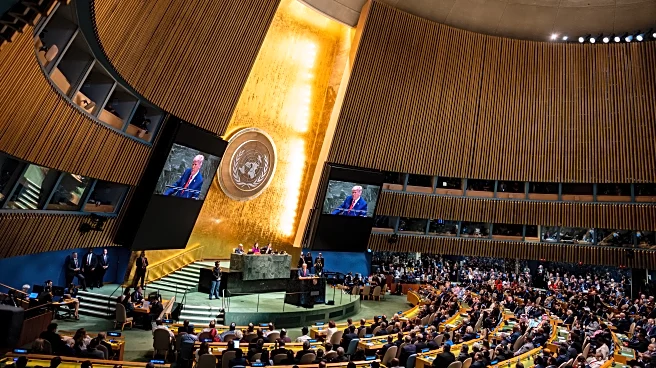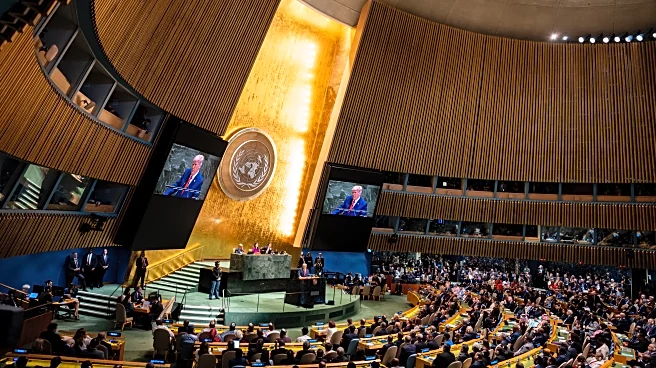What's Happening?
The declining birth rate in the United States has become a significant concern, prompting discussions on potential solutions. President Trump is reportedly considering a 'baby bonus' of $5,000 to encourage childbirth. Lawmakers are exploring options such as making childbirth free for privately insured families and tying state transportation funding to birth and marriage rates. The issue stems from a projected fertility rate of 1.60 births per woman over the next three decades, below the replacement rate of 2.1 births per woman needed to maintain a stable population without immigration. Experts like William Frey from The Brookings Institution warn that continued low fertility could lead to fewer workers supporting an aging population, impacting government programs like pensions and healthcare. However, some experts, including Karen Benjamin Guzzo from the University of North Carolina, argue that the dangers of low birth rates are overstated and suggest economic and immigration policies as solutions.
Why It's Important?
The declining birth rate poses challenges for the U.S. economy and social systems. An aging population could strain resources, with fewer workers to support seniors through government programs. This demographic shift may lead to increased pressure on younger generations to be productive and healthy, potentially diverting investments from child-supporting programs to senior-supporting ones. The situation calls for strategic planning to accommodate an aging population, including adjustments to pension and healthcare systems. Experts suggest that investments in education, labor-saving technologies, and policies encouraging later retirement could mitigate negative economic impacts. The debate highlights the need for policies that support families in achieving their desired fertility preferences, which could help address the issue.
What's Next?
The U.S. government and other nations are expected to continue exploring policy changes to address the declining birth rate. Potential solutions include supporting family-friendly workplace policies, accessible healthcare, and investments in infrastructure and research. Policymakers may focus on creating environments that benefit both young and aging communities, such as walkable places and flexible transportation options. The ongoing discussion emphasizes the importance of planning for demographic changes to ensure economic prosperity and societal well-being.
Beyond the Headlines
The declining birth rate also reflects societal progress, with individuals having more control over their fertility choices. This shift allows people to pursue education, careers, and find suitable partners before having children, contributing to personal and societal success. The trend of reduced teen pregnancies and increased use of effective contraception highlights the positive aspects of this demographic change. Experts advocate for policies that support individuals in achieving their fertility preferences, which could lead to more births if families are adequately supported.












